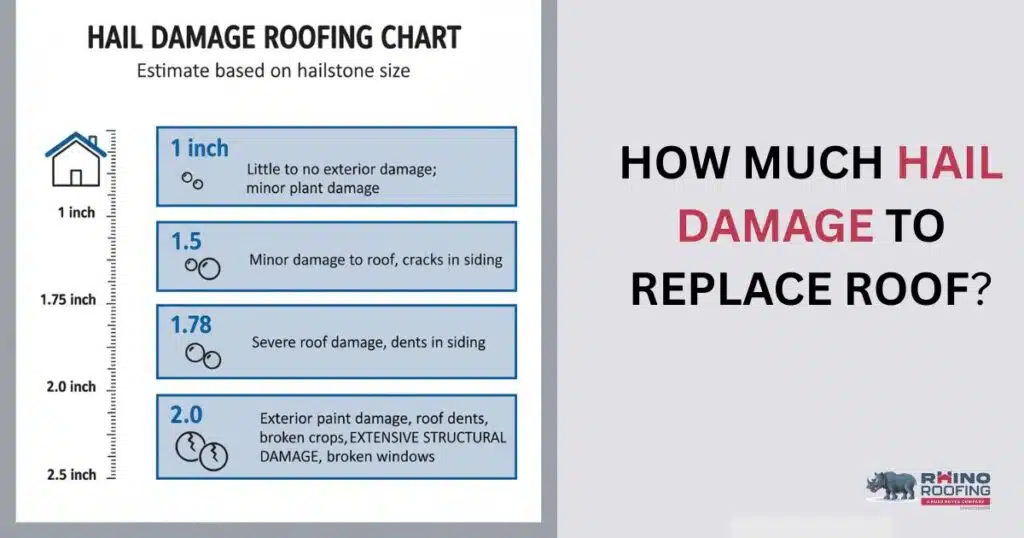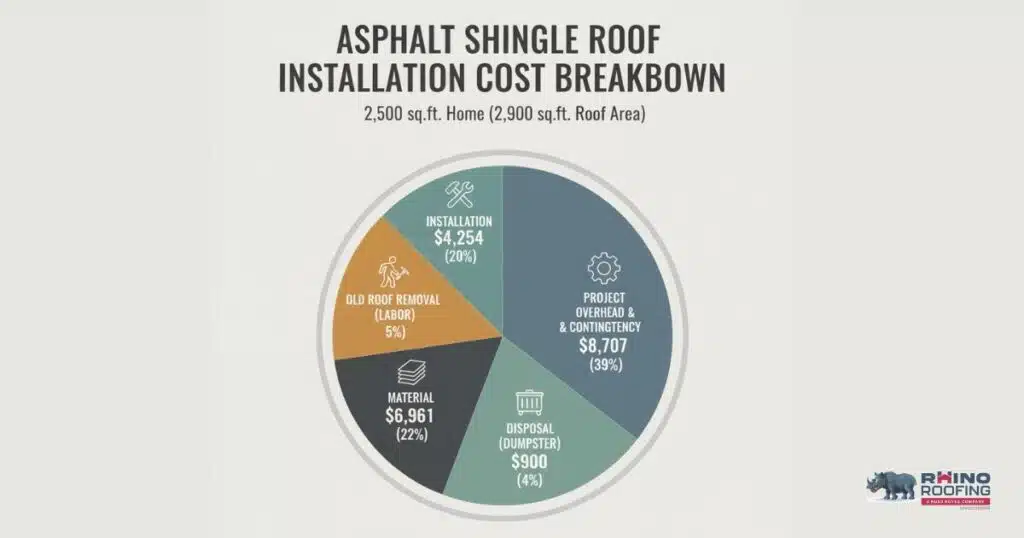When undergoing a roof replacement, it’s a personal decision whether to stay home or not. While staying allows you to monitor the work and address any concerns, the process can be noisy, disruptive, and involve potential risks like falling debris or water damage if not properly managed. If you are sensitive to noise or disruptions, or have young children or pets, it might be better to stay elsewhere for the day. Proper preparation and communication with your roofing contractor can help minimize the impact if you choose to remain at home.
Roof replacement is a major home improvement task that can cause disruption and anxiety, especially when it involves deciding whether to stay home during the process. While it’s tempting to want to monitor the project or stay nearby in case of emergencies, roof replacement involves a variety of factors that can impact your decision. In this guide, we’ll delve into whether staying home during roof replacement is advisable, what potential issues may arise, how to prepare, and how long the process might take.
What Can Go Wrong During a Roof Replacement?
Roof replacement may seem like a simple project, but there are several things that could potentially go wrong if not handled properly. Being aware of these issues beforehand will help you make informed decisions and mitigate risks during the project.
Water Damage During Roof Replacement
Water damage is one of the primary concerns homeowners face during a roof replacement. While your roof is being replaced, it is exposed to the elements, and if it starts to rain, there’s a risk that water could seep into your home. This is especially true if the roofers don’t cover the area properly with tarps or plastic sheeting.
However, reputable roofing contractors will take steps to minimize this risk. They will typically cover vulnerable areas like your attic, windows, and doors with tarps to prevent water infiltration. If it’s a rainy season or there’s a forecast of unpredictable weather, discuss the contingency plans with your contractor to ensure water doesn’t damage your home.
Structural Issues and Hidden Damage
While roofers are replacing the roof, they may uncover hidden damage, such as rotten wood, mold, or structural issues. These problems can add time and cost to the project. In some cases, the roofers may need to replace additional materials like the plywood or underlayment to ensure the new roof will be secure and durable.
These hidden damages are not always predictable, so it’s essential to understand that unexpected costs and delays could arise. It’s also a good idea to prepare for these potential issues financially and mentally.
Noise and Disruption
The noise level during a roof replacement can be intense. Removing old shingles, hammering nails, and installing new materials will create significant sound, which can be disturbing for anyone at home. If you work from home, have small children, or prefer a quiet environment, it may be a good idea to plan for an alternative location. Even if you choose to stay home, consider using ear protection or noise-canceling headphones to make the environment more tolerable.
Additionally, the workers will be moving around, which could result in some disruptions to your daily activities. Expect areas of your yard to be roped off, and the need for traffic management around your property as workers come in and out.
Falling Debris
Another risk associated with roof replacement is falling debris. Nails, broken shingles, and other materials can fall onto the ground or even into your house if not carefully controlled. To avoid this, make sure that the roofers are using tarps, nets, or other safety measures to catch debris.
If you’re staying at home, you may want to avoid walking under the area being worked on or entering rooms directly beneath the roof. This precaution will ensure you’re safe and help prevent injury.
Do Roofers Need to Come Inside?
While much of the roof replacement work is completed on the exterior of the home, there are some instances where roofers may need to enter your house. It’s natural to wonder how much intrusion you can expect during the process. Here’s a breakdown of when and why roofers might need to enter:
- Inspection of the Attic: In some cases, roofers may need to inspect the attic to check for moisture damage, mold, or ventilation issues that could affect the roof’s performance. This is especially important if the roof replacement involves changes to the insulation or ventilation system.
- Accessing Electrical Components: Roofs with skylights, vents, or electrical wiring may require the roofers to come inside briefly to disconnect and reconnect power sources safely.
- Cleaning: After the replacement is complete, roofers will need to clean up the surrounding area, which may include entering the interior to inspect for dust or debris that could have been tracked inside during the process.
If this is a concern for you, discuss with your roofing contractor the level of access they need inside the house. Most jobs can be completed without much disruption inside the home, but it’s always best to ask upfront.
Can a Roof Be Replaced in One Day?
A question many homeowners ask is whether a roof can be replaced in a single day. The answer depends on several factors, such as the size of your roof, the type of material being used, the weather, and the skill of the crew.
Smaller Roofs and Asphalt Shingles
For smaller homes or roofs that use asphalt shingles (the most common roofing material), roof replacement can typically be completed in one day. A skilled crew of roofers can tear off the old shingles and install the new ones in a single day, especially if weather conditions are favorable.
Larger or More Complex Roofs
For larger homes or roofs that require more intricate work (like multi-story homes, roofs with complex angles, or homes with slate or tile roofs), the job may take longer. These types of roofs require more time to install and may also require extra care to ensure structural integrity and durability.
Weather Conditions
Unpredictable weather, such as rain or high winds, can delay the project. If the weather turns unfavorable during the process, roofers may need to halt the work to avoid water damage or potential injury. This can extend the timeline, so keep this in mind when planning your roof replacement.
How to Prepare for Roof Replacement
Proper preparation is key to ensuring a smooth roof replacement process, especially if you plan to stay at home. Here are some practical steps you can take to prepare:
Clear the Area Around the House
Before the roofers arrive, make sure to clear the area around your home. Remove any outdoor furniture, plants, or other objects that could be in the way or could get damaged during the process. This also gives the roofers plenty of space to work and reduces the chance of accidents.
Secure Pets and Children
The noise and activity around the house can be overwhelming for pets and small children. It’s best to keep them inside the house or, if possible, have them stay somewhere else for the day. If you decide to stay home, make sure to establish a safe and quiet area for them to relax.
Set Up a Designated Entrance for Roofers
It’s a good idea to designate a specific entrance for the roofers to use, especially if you’re staying at home. This will help minimize disruption and maintain some level of privacy. Make sure the workers are aware of where they should enter and exit to avoid unnecessary disturbances to your routine.
Prepare for Noise and Disruption
Expect noise from the roofing process. The sound of hammers, power tools, and shingles being torn off can be loud. If you’re sensitive to noise, consider using ear protection or noise-canceling headphones, and try to stay in rooms that are further away from the action. If possible, schedule important activities (e.g., phone calls, meetings) for times when the crew is on break.
How Long Does It Take to Replace a Roof?
The time it takes to replace a roof can vary depending on various factors such as the size of the roof, the materials, and any unexpected issues that may arise.
Small Roofs
If your home has a relatively small roof (under 1,500 square feet), the job can typically be completed in one day. This is common with asphalt shingle roofs, which are relatively quick to install.
Medium to Large Roofs
For medium-sized homes (1,500 to 3,000 square feet), the process might take two days. For large roofs (over 3,000 square feet), it could take three days or more, especially if there are complications like weather delays or structural repairs.
Unforeseen Problems
Sometimes, issues like mold, rot, or structural damage aren’t discovered until the old roof is removed. These unforeseen issues can add extra time and cost to the project. It’s important to work with an experienced roofer who can assess and handle these issues as they arise.
Conclusion
Deciding whether to stay home during a roof replacement involves several considerations, including the level of noise, disruption, and safety. If you’re comfortable with the temporary inconvenience and want to monitor the process, staying at home might be the best choice. However, if the noise and potential hazards are a concern, you might want to plan to stay somewhere else during the replacement.
By understanding the risks involved, preparing your home properly, and staying informed about the process, you can ensure a smoother experience. Don’t hesitate to communicate with your roofing contractor about any concerns, and make sure to prepare in advance to minimize the impact of this important home improvement.
FAQ Section:
Should I Stay Home During Roof Replacement?
It’s a personal choice, but if you’re sensitive to noise, debris, or potential disruptions, it might be best to stay elsewhere for the day. If you choose to stay, ensure you’re prepared for the noise and potential hazards, and make sure to secure your pets and children in a safe area away from the work zone.
What Can Go Wrong During Roof Replacement?
Several issues can arise, including water damage if the roof isn’t properly covered during rain, noise disturbances, falling debris, and uncovering hidden damage such as rot or structural issues. These concerns can add time and cost to the project, so it’s important to stay informed and communicate with your contractor.
Do Roofers Need to Come Inside My House?
In most cases, roofers don’t need to enter the house. However, they may need access to the attic for inspections or repairs, and they may also enter to clean up after the job. If you have any concerns, discuss the level of access with your contractor beforehand.
Can a Roof Be Replaced in One Day?
Yes, depending on the size of your roof and the materials used, a roof replacement can often be completed in one day. Smaller homes with simple asphalt shingles are typically the quickest to replace. However, larger or more complex roofs may take longer.
How Long Does It Take to Replace a Roof?
Roof replacement generally takes between one and three days, depending on the size of the roof, the materials, and any unforeseen issues. Small roofs can be replaced in one day, while larger roofs or those with structural damage may take longer.
How Can I Prepare for Roof Replacement?
Preparation includes clearing the area around your house, securing pets and children, setting up a designated entrance for roofers, and mentally preparing for the noise and disruption. It’s also important to discuss any specific concerns or requirements with your contractor beforehand.
What If It Rains During Roof Replacement?
Rain can delay the project and potentially cause water damage if the roof is not properly covered. Ensure that your contractor has a contingency plan in place, such as tarping your roof, to protect the interior of your home in case of rain








